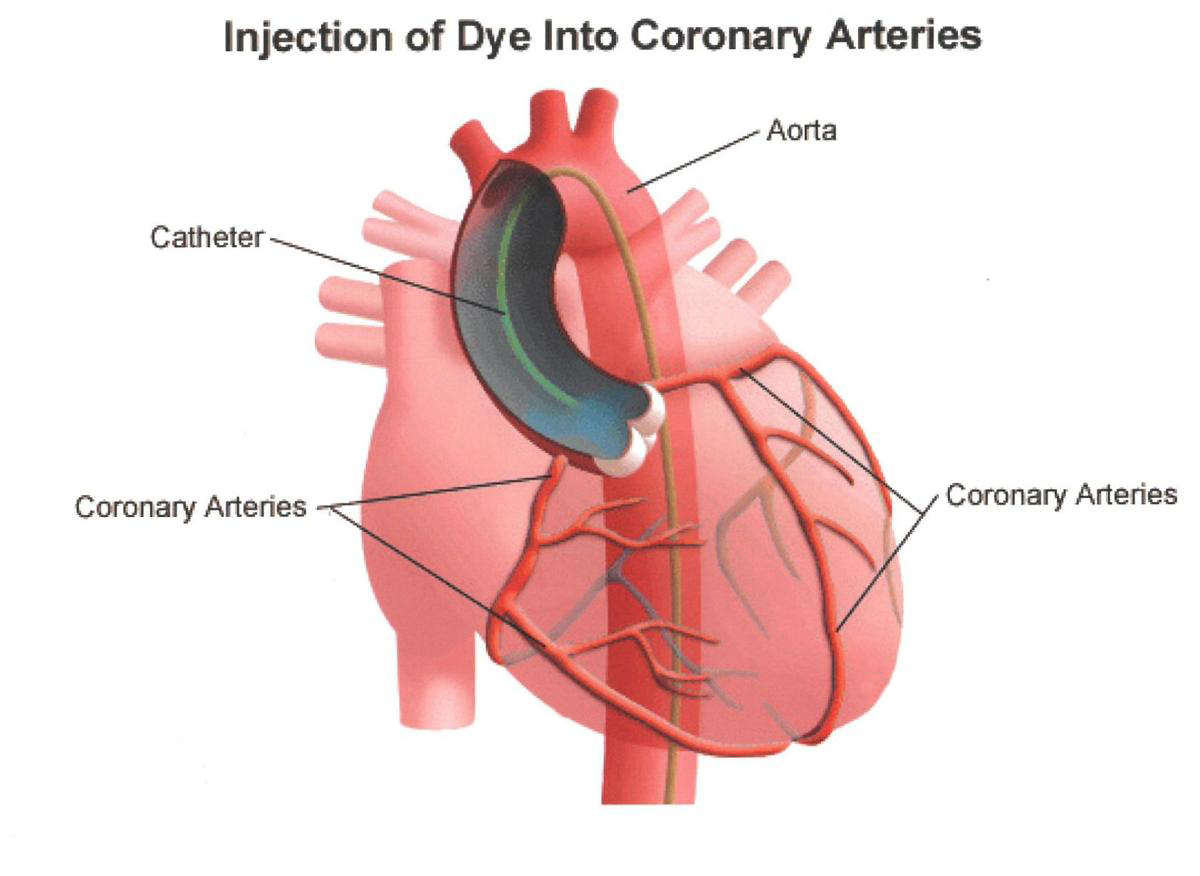
What is Coronary Angiography and Left Ventriculography?
Coronary angiography, also known as cardiac catheterisation, is a procedure performed to visualise the coronary arteries which are blood vessels that supply blood to the heart. It is the gold standard to diagnose coronary artery disease. The procedure involves the injection of a contrast material (commonly known as a dye) into the blood vessel through a small tube or catheter inserted into a large artery in the left or right groin or wrist. Digital images of the heart's blood vessels will then be recorded using special X-ray cameras.
Often, another procedure called the left ventriculography is performed at the same session, whereby the inserted catheter is placed into the left ventricle and the contrast medium is injected. This allows visualisation of the left ventricle and its contraction.
The procedure is performed in Tan Tock Seng Hospital's Invasive Cardiac Catheterization Laboratory under local anaesthesia.
Why do I Need a Coronary Angiography and/or Left Ventriculography?
Coronary or heart arteries supply blood to the heart muscle to maintain its vital function. Narrowing of the coronary artery occurs when fatty deposits accumulate on the arterial wall in a medical condition called atherosclerosis.
Atherosclerosis can cause the following symptoms:
- Chest pain
- Breathlessness
- Irregular heart rhythm
- Fatigue
If left undetected, these blockages of the coronary arteries can cause serious health threats such as heart attacks or even sudden death.
Coronary angiography is carried out:
- To determine whether any significant narrowing or blockage is present in the coronary arteries
- To determine the best form of treatment
- Before coronary angioplasty (balloon procedure), to provide a "road-map" for guiding the angioplasty procedure
What can I Expect for the Procedure?
Before the Procedure
Routine investigations, including blood tests, an electrocardiogram (ECG) and a chest X-ray will be done. A small tube or cannula will be inserted in one of the veins of your hand to administer the medication. Hair on your groin and upper thigh may be shaved. You will need to sign a consent form after your doctor has explained the indications and risks of the procedure to you.
During the Procedure
You will be brought into the laboratory where you will be placed on a movable table equipped with X-ray cameras and heart monitors. A nurse will clean your groins or wrists depending on the access site, then cover you with a sterile drape.
The initial injection of local anaesthetic that is done under the skin can be slightly uncomfortable but the subsequent insertion of catheter(s) should not be painful. Inform the doctors or nurses of any discomfort encountered during the procedure. You may experience a harmless warm sensation in your body during the left ventriculography, which will last no longer than 1 minute. The procedure normally takes about 15 to 30 minutes.
After the Procedure
The catheter will be removed and the groin puncture site will be compressed for 15 minutes until the bleeding stops. A compressive bandage will then be applied. You will be brought back to your assigned bed where you will need to lie flat on your back for about 6 hours until your doctor confirms that you are fit to leave the bed.
However, if the procedure was done through the wrist, the catheter will be removed immediately after the procedure followed by the application of a compressive bandage around the wrist. You will be monitored for 4 hours and can be discharged on the same day.
Inform Your Doctor On:
- Any allergies, particularly to iodine, X-ray contrast medium and pain-relieving medications.
- If you are suffering from diabetes and taking a medication called Metformin. You will need to stop this medication for at least 2 days before and after the angiography.
What are the Potential Risks?
Coronary angiography is generally safe. However, some potential risks include:
- Minor complications such as bleeding, swelling and bruising from the puncture site and allergic reaction to the contrast medium.
- Very rare major complications such as heart attack, stroke or death during the procedure.
When Will I Know the Results?
Your doctor will discuss the results of the angiogram and the next step of your treatment with you after the procedure.
